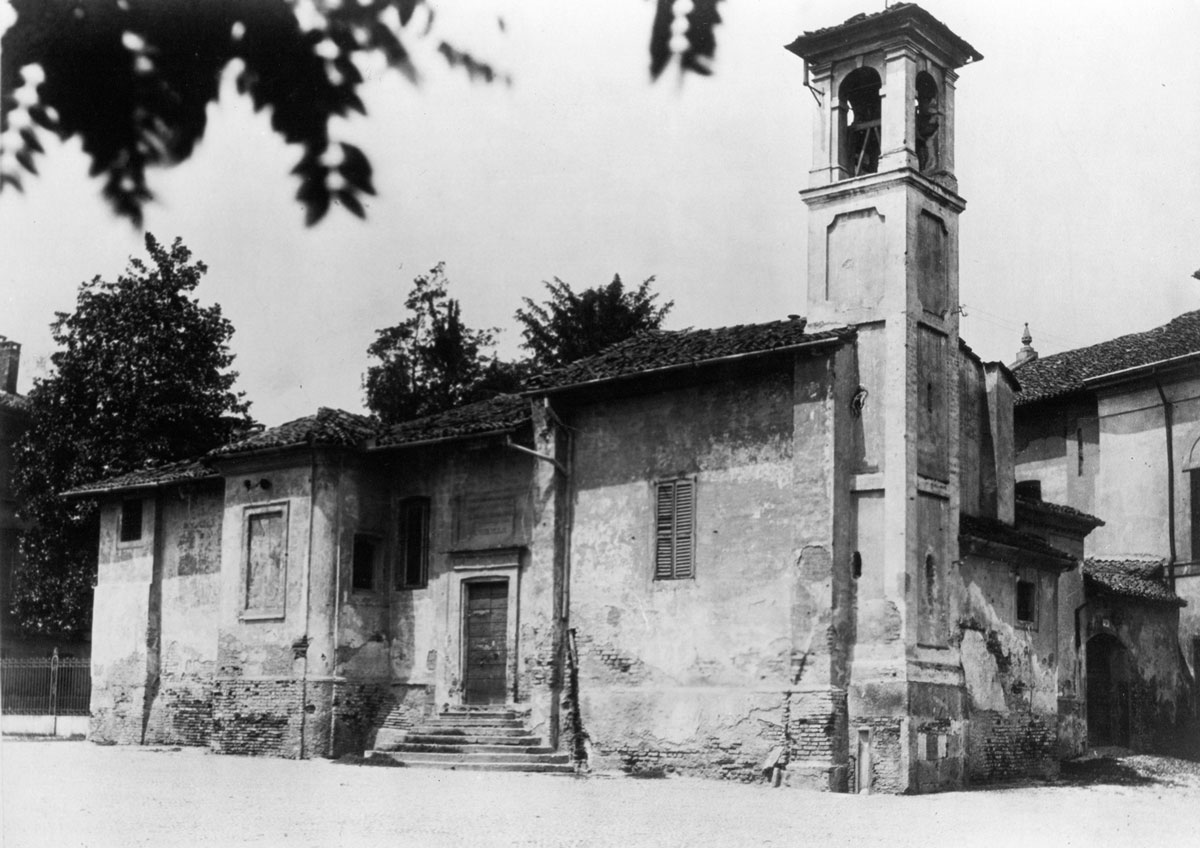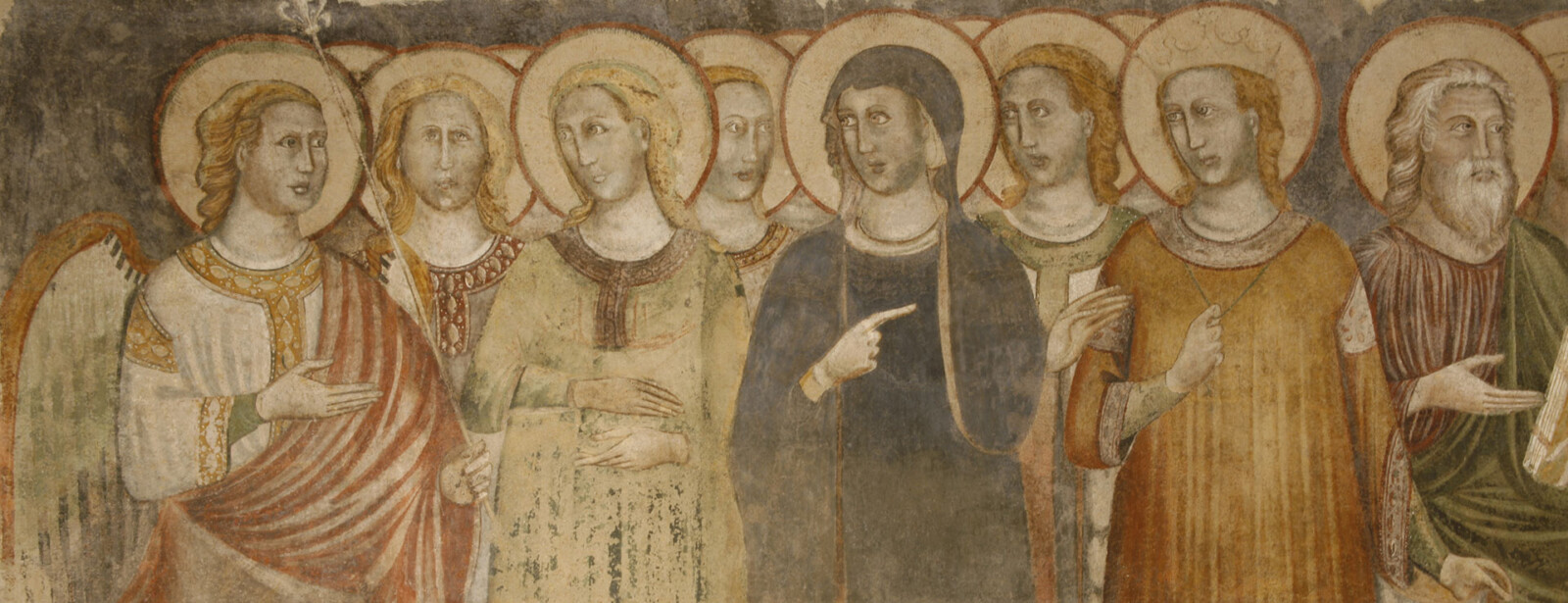Destroyed in 1921 for the opening of Piazza Carducci, San Michele was one of the most venerated churches of Monza, dating perhaps to the Longabarda age.
Small and with a single nave, it hosted in 1128 the coronation of Conrad III of Swabia. Around 1320 a painter from Rimini painted a cycle of frescoes dedicated to the Virgin.
Two scenes remain, escaped the destruction of the building.
The first, a Dormitio Virginis, is now in Santa Maria degli Angeli. The other, large and known as Mass of San Michele, is instead exposed in museum, to witness the vitality of the pictorial yards monzesi from the beginning of the fourteenth century and the revival in viscontea age of the cult of Theodolinda.
Traditionally the queen is identified in the female figure dressed with a sumptuous cloak and surrounded by a crown that accompanies the Virgin in the procession of saints, led by the archangel Michael, depicted attending a mass offìcata by two deacons.
Despite the simplicity of the installation, the meaning of the painting remains obscure.
Interpreted in the past as a re-enactment of the appearance of the heavenly court at the consecration of the grotto of San Michele on the Gargano, the most venerated sanctuary by the Lombards, who extended their domains to southern Italy, was then read as a depiction of the All Saints’ Mass or a Mass for the dead in the presence of the Lombard kings, based on a passage from the Golden Legend.
From another passage of the same text comes also the recent proposal to see an evocation of the last mass of Our Lady before death, in the presence of the elect.






